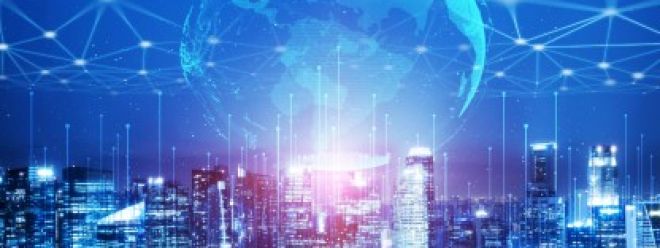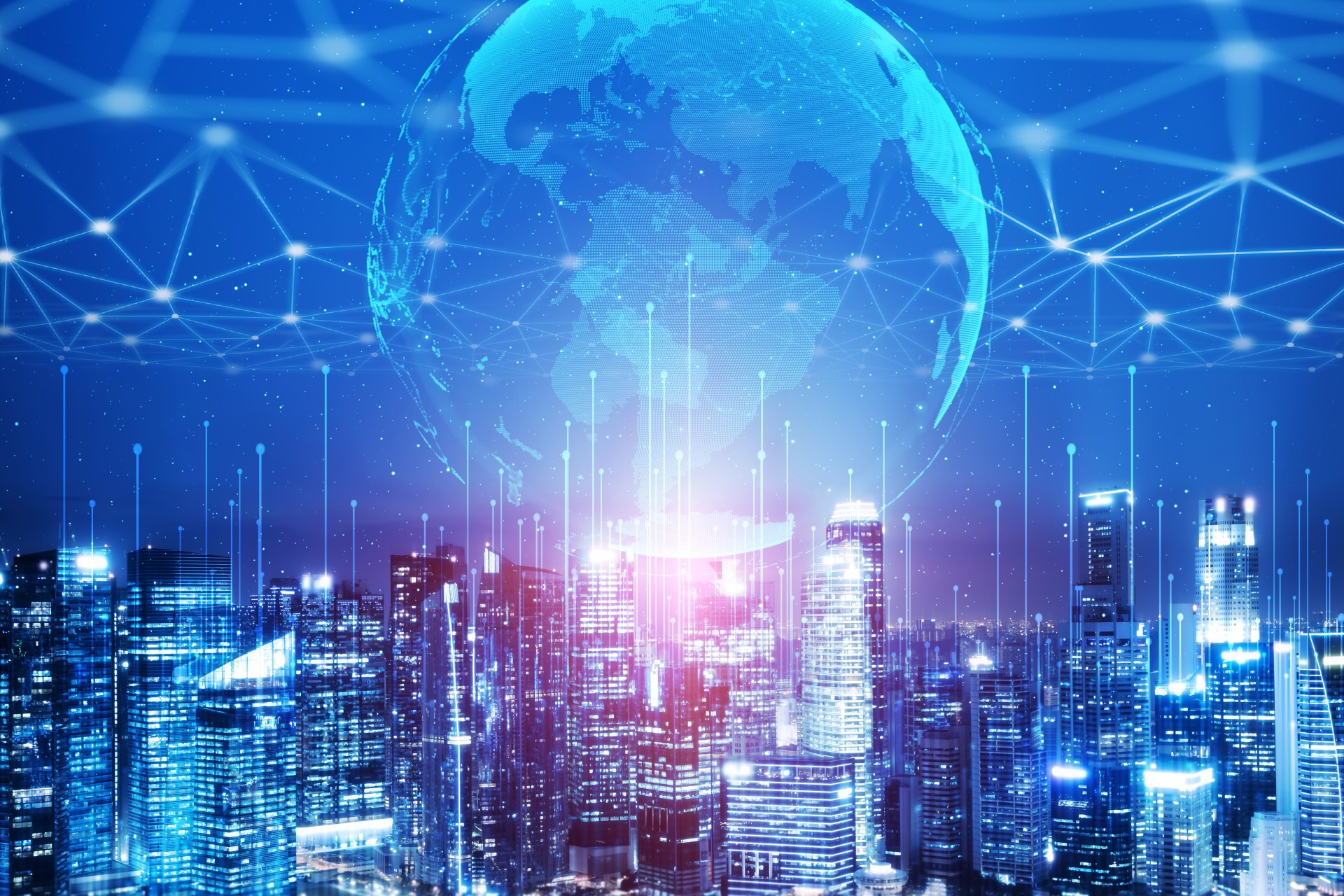How Fiber Helps Businesses and People in the Digital Age

How Fiber Helps Businesses and People in the Digital Age
How Fiber Helps Businesses and People in the Digital Age
We consume more and more data every year. In order to ensure the reliability of the connection, the telecom pulled up the fiber optic network. In every field of our life, fiber optic sensors are used more and more widely. Experts agree that fiber optic technology will become increasingly important in the coming years.

Today's world is changing rapidly, with new trends in economic development and global challenges emerging one after another. Fiber optic technology is a very promising field, and here are five reasons why entrepreneurs should pay close attention to it.
digital transformation
Digital transformation and Industry 4.0 transformation aim to improve the status quo of enterprises by re-evaluating their original business model. Digitization allows changing corporate processes and reassessing their strategies. But it should not be confused with automation, because automation just optimizes the work of employees and reduces the influence of human factors. On the other hand, digital transformation helps to assess the efficiency of workflows and find new forms of interaction with customers. In fact, the sooner a business realizes the need for digital transformation, the more likely it is to remain competitive.
Of course, the question of digital transformation does not apply to all businesses, but it applies to many. For example, the retail industry clearly benefits from "digitization". The implementation of video analytics can track queues and quickly open additional registers, as well as analyze peak times for store visits. Earlier, IDC estimated that businesses could spend $1.8 trillion on digital transformation by 2022, and that figure could reach $3.4 trillion by 2026. Of course, digital transformation means an increase in the speed and quality of information transmission, and fiber optic networks can help make that happen.
When people hear "optics" they immediately think of telecommunications, but there are other ways to take advantage of it. For example, fiber optic sensors (FOS), sensors that utilize optical fibers as data transmission lines, can be successfully used to monitor various processes. In the industrial field, FOS can be used for process control and the implementation of the fourth industrial revolution; while in the oil and gas field, it can be used for equipment monitoring during extraction and transportation, optimized storage tank management, etc.
Internet of Things (IoT)
The Internet of Things is a computer network system that collects and exchanges data, enabling processes to be controlled remotely without human intervention. People are increasingly integrating IoT into their daily lives. In search of comfort, people are actively utilizing advanced technological devices in the concept of smart home. The Internet of Things consists of interconnected devices that communicate with a central control center through IoT protocols, and then connect to user terminals through providers' servers. The user terminal can be a touch console on a residential wall or a homeowner's smartphone. According to Precedence Research, the global smart home technology market will reach $80.45 billion in 2022 and is expected to grow to $581.85 billion by 2032.
However, IoT is not limited to automatic coffee machines or light bulbs. Businesses also use it for more holistic purposes, such as automating routine processes and increasing labor productivity. According to Meticulous Research, the Industrial Internet of Things market is growing at an annual rate of nearly 17%, and is expected to reach $263.4 billion by 2027. Global giants like Ford, Mercedes-Benz and John Deere have adopted this technology.
Smart technologies require extensive broadband networks. Without them, the industry cannot thrive. Machine-to-machine communication and device-to-user interaction require the transfer of large amounts of data to data center servers. Essentially, further proliferation of the smart home concept requires fiber optic networks in every home.
Big Data
IoT is closely related to Big Data (massive data sets). They are an integral part of Industry 4.0, which involves the convergence of business and society with digital technologies. There are many use cases for big data, two examples will be provided here, one in the mechanical domain and one in the human domain. In the industrial field, big data can automate production, predict critical situations, and analyze demand for specific products. In healthcare, big data enables disease prediction, electronic medical record preservation, early detection of critical conditions for each patient, and selection of the best treatment strategies for individuals.
Clearly, the data that businesses accumulate is very valuable to them because it contains information about customers and key processes. Using this information correctly can provide a significant advantage over your competitors. However, achieving this requires advanced IT infrastructure. Instant access to big data requires data centers with powerful servers, as well as high-speed data transmission, which can only be guaranteed by fiber optics. Data processing in data centers also means increased use of fiber optic networks.
Smart City
Another rapidly developing trend is the emergence of "smart cities". There are currently more than 200 smart cities in the world, of which Barcelona, Singapore, London, Dubai, Seoul, New York, Zurich and Amsterdam are the most advanced cities. These urban centers use big data to improve safety and energy efficiency.
Smart cities are characterized by improved urban infrastructure. For example, smart city systems can help enhance fire safety. Sensors alert emergency services in good time, and city systems automatically adjust traffic while notifying citizens. Smart city systems are able to track the location of objects, allowing residents to use their smartphones in real time to determine the arrival of a bus or identify streets affected by traffic congestion.
In order to successfully implement a "smart" approach to urban planning, technologically advanced data centers and effective data analysis solutions are necessary. Seamless connectivity and high-speed internet access are also necessary for sensors and devices to collect and communicate information. Fiber optic networks can also play an important role, as they offer low signal attenuation, are immune to electromagnetic interference, and function effectively under varying temperature and humidity levels.
Environmental, Social and Governance (ESG) Transformation
Many businesses around the world are undergoing environmental, social and governance (ESG) transformation. These businesses utilize renewable energy, implement waste recycling practices, collaborate with public associations, and select partners and clients interested in sustainable development. The level of investment in such projects varies by the size of the organization and industry, but businesses are increasingly incorporating this type of spending into their investment plans.
According to the European Commission, telecommunications currently account for 8-10% of global energy consumption and 2-4% of greenhouse gas emissions. Fiber optics can help reduce these numbers, as the technology offers many advantages over copper cables. First, fiber optics allow for reduced copper production. A 200-foot copper cable requires 2 kilograms of copper, and the mining process releases about 1 kilogram of hazardous substances into the atmosphere. Second, optical signals can be transmitted over long distances with minimal power loss through optical fibers, reducing the number of signal amplifiers and reducing energy consumption. Third, fiber optic cables are more durable than copper cables. Its resistance to corrosion, temperature fluctuations and electromagnetic interference means that networks built using fiber optics do not require frequent repairs.
However, sustainable development is not only about ecology, but also about achieving a balanced flow of processes in the economic and social life of people. Optical fiber is a business contribution to solving social problems. This technology can bridge the digital divide, giving previously digitally deprived people the opportunity to fully participate in the global economy and improve their quality of life. For some, it provides the ability to consult a healthcare professional in a timely manner; for others, it provides access to education and employment opportunities to apply acquired knowledge to practice.
what's next
Digital technology is a vivid example of how communication can improve people's quality of life. According to statistics from Statista, in 2017, the number of fiber-optic Internet users in the world exceeded 1 billion. By 2022, among the 5.3 billion Internet users in the world, the number of fiber-optic Internet users will increase to 1.4 billion. Clearly, there is a strong demand for fiber optic technology in telecommunications in the long run, and the implementation of FOS and other advanced optical solutions will help the sector continue to grow.
For businesses, fiber optics provides faster, more efficient communications, enables cutting-edge technology adoption, and enhances data security. It is a critical infrastructure component of global businesses, enabling businesses to remain competitive, innovate and thrive in the modern digital age. Entrepreneurs who want to maintain operations and grow their businesses amidst major trends in the global economy and technology should keep a close eye on the fiber optic business, explore investment prospects, form solid partnerships, and assess the potential of integrating these technologies into their operations.